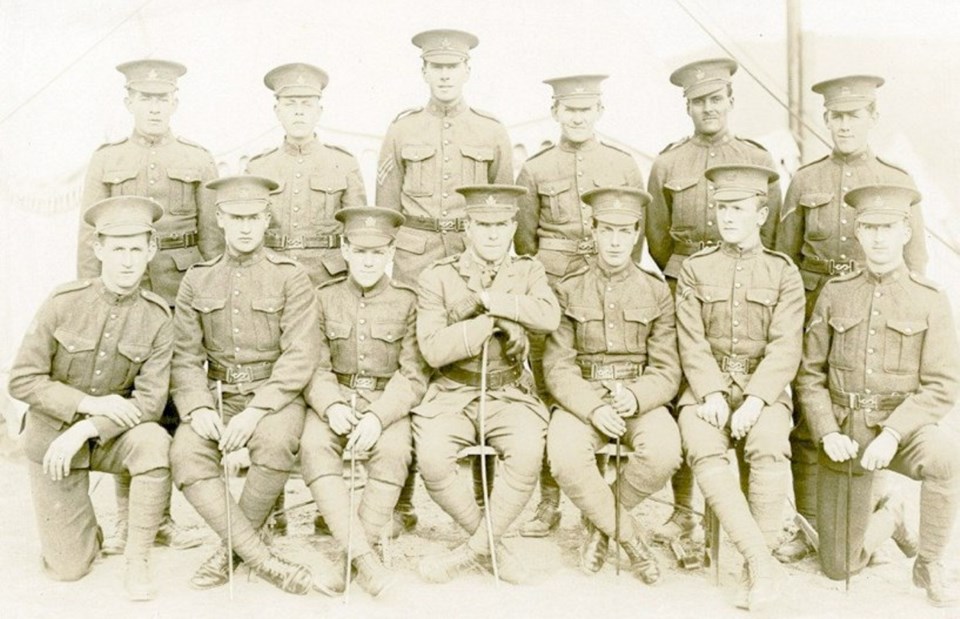Names on a Cenotaph: Kootenay Lake Men in World War I,
by Sylvia Crooks
Granville Island Publishing, 249 pages, $19.95
One of the most notable markers in Royal Oak Burial Park in Saanich is that of Rowland Richard Louis Bourke, a recipient of the Victoria Cross for his actions during the First World War.
He received the highest military honour for his actions on May 9 and 10, 1918, at Ostend, Belgium. His motor launch entered the harbour at Ostend to rescue an officer and two seamen who were clinging to an overturned boat. His launch was under heavy fire and was hit 55 times, losing two crew members. Bourke was able to get out to open sea.
In the Second World War, Bourke served in the volunteer navy, lending his experience in action to another generation of Canadians.
Bourke was just 17 when he came to Canada from London in 1902, aiming to find his fortune in the Klondike gold rush. By 1907 he was in Nelson, clearing land about Kootenay Lake for a fruit ranch.
When the First World War started, Bourke tried to enlist but was turned away because of poor eyesight.
He was finally accepted into the Royal Naval Voluntary Reserve, and the rest was history. The man considered half-blind in his hometown became one of Canada’s great war heroes.
Greater Victoria claims Bourke — this is his final resting place, after all, and he lived here for many years. Nelson claims him, too, which is why he warranted inclusion in this book on men from the Kootenay Lake area who served in the Great War.
The inspiration for the book by Sylvia Crooks, which is the result of six years of research, was the cenotaph in Nelson, which bears the names of 250 men who lost their lives in the war. Another 30 names are on cenotaphs in small communities in the Nelson area.
Crooks searched for all the information she could find on these men and has compiled small biographies with a chronology of the war.
It’s an effective way to present the information, since we are not being asked to view the deaths of the men in isolation. By taking us week by week through the war, telling how young men from British Columbia fell, Crooks connects us to the conflict and makes it seem real.
We are there in the trenches with the men and they are not just numbers, they are real people with professions and families and interests.
About 67,000 Canadians lost their lives in the war. These are the dead; the men who died in the first deadly gas attack at Ypres, or in the battles for Vimy Ridge and for Passchendaele.
She includes men such as Bourke, who survived the war, as well as men who were killed. Many of these soldiers and sailors, again like Bourke, had strong connections to Victoria. In fact, one of the major sources of information was the Daily Colonist newspaper.
The research by Crooks revealed that names on a cenotaph cannot always be trusted. Some Nelson men who should have been listed were missed and others were included only because family members lived in Nelson and insisted that they be there.
That’s something to bear in mind when dealing with historical records. We don’t always know why any list was compiled the way that it was.
But that’s a detail, a side note that does not take away from the strength of this book.
Names on a Cenotaph tells a powerful story about the Great War and takes us into the heart of the action like few other books can do.
The reviewer is editor-in-chief of the Times Colonist.



